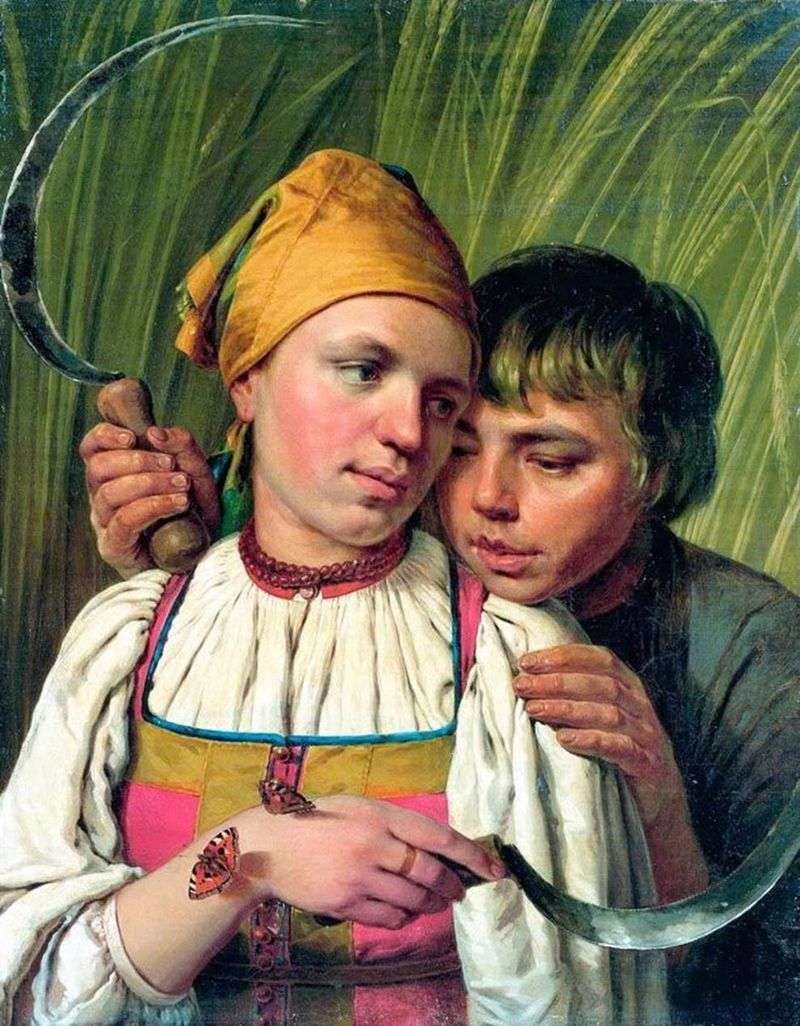
“Reapers” is another example, confirming the significance of the image of the Russian peasant for Venetsianov. Similar peasants and the topic of harvest can be seen in many of his other works. During a walk through the field the artist was fascinated by the sight of two simple peasant reapers, admiring the beauty of butterflies sitting on the arm of the priestess. They were Anna Stepanova and her son Zakharka. They were then posing for the artist.
The first thing that strikes many people is the very butterflies with which the village boy admires with bated breath. Alexei Gavrilovich painted them in such a way that at first glance at the picture it is not immediately clear whether they are painted or real. In the face of a boy looking over his mother’s shoulder, we can see delight, an endless interest in these motley butterflies. He is still very young and sees the whole world as one beautiful composition, each element of which I so much want to see and know. Zakharka’s mother tilted her head toward her son and looked away, condescendingly and easily smiling. The facial features and her look express kindness, modesty and fatigue from hours of work.
With dense and confident strokes, the author creates peasant clothes: his mother has a white linen shirt that has darkened from work, a yellow headscarf and a Russian sarafan of rags, and his son has a black monophonic shirt. Sickles were created in the hands of peasants with the same strokes, and fresh ears spiked behind their backs. All these subjects help to easily understand and penetrate the plot of the picture. The laconic character of the picture and the impression it produces are enhanced by the skillfully noted Venetian details.
It is enough to compare the gentle wrists and brushes of the mother and the rough weather-beaten fingers of the son, or the fever on the face of a tired woman, the ring and beads of a peasant woman, striving for beauty. The work literally absorbs the beholder, forcing to imbue with the atmosphere of fascinated contemplation.
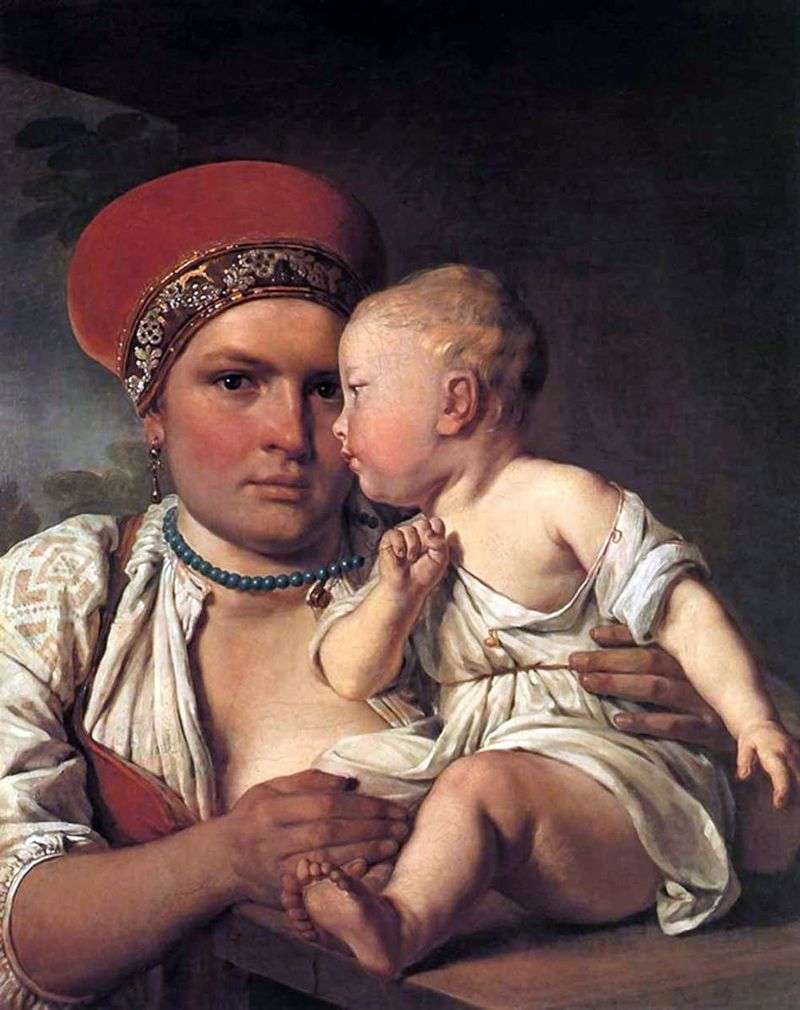 Nurse with a child by Alexei Venetsianov
Nurse with a child by Alexei Venetsianov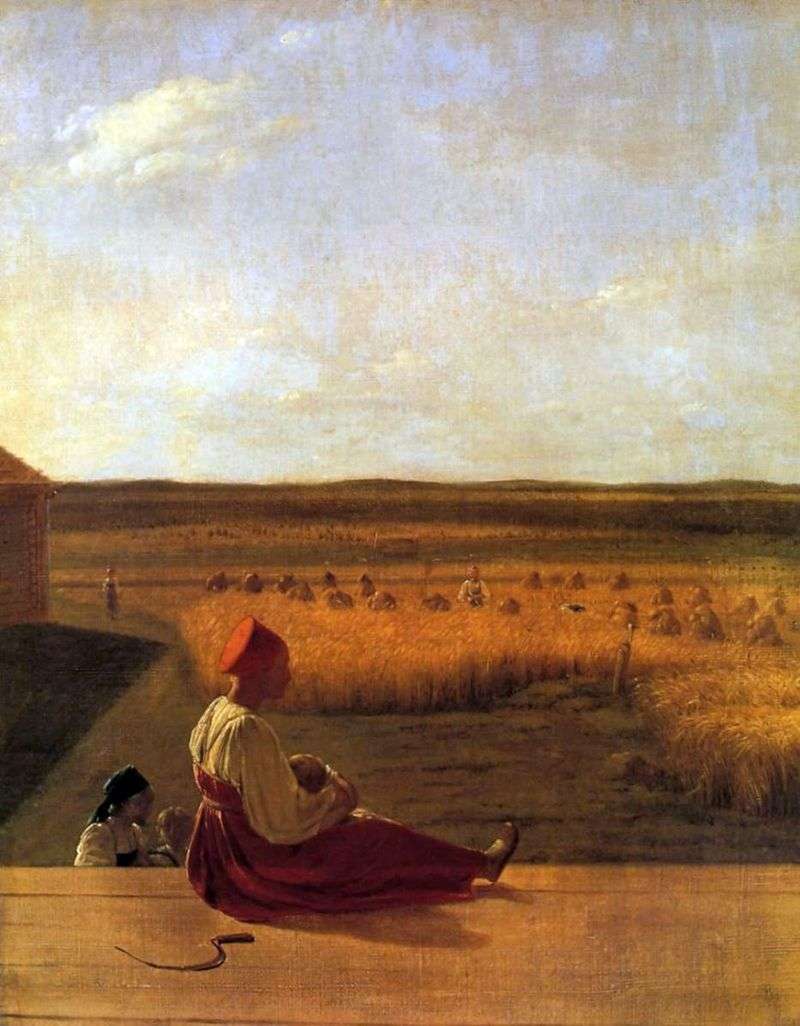 In the harvest. Summer by Alexei Venetsianov
In the harvest. Summer by Alexei Venetsianov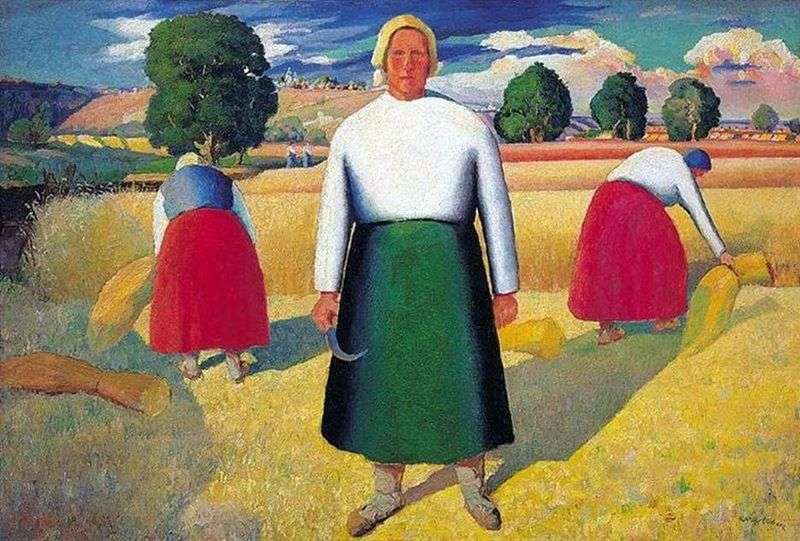 Reapers by Kazimir Malevich
Reapers by Kazimir Malevich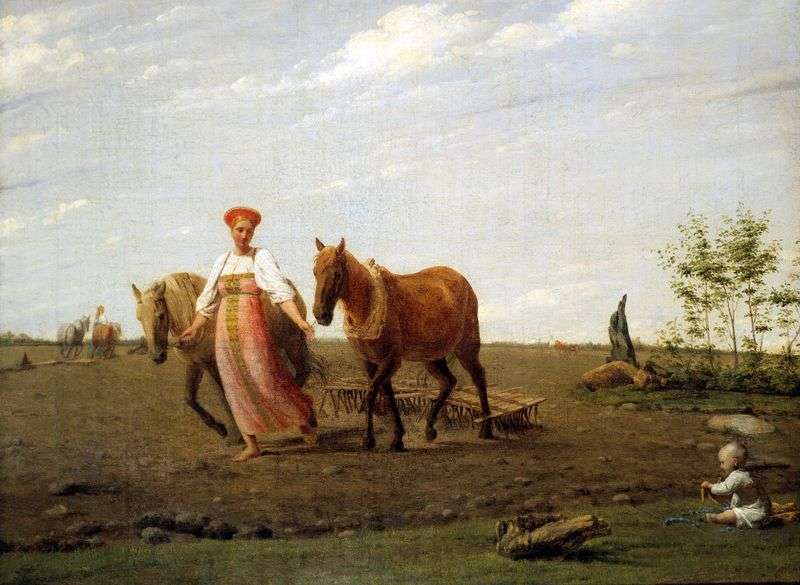 On the plowed field. Spring by Alexei Venetsianov
On the plowed field. Spring by Alexei Venetsianov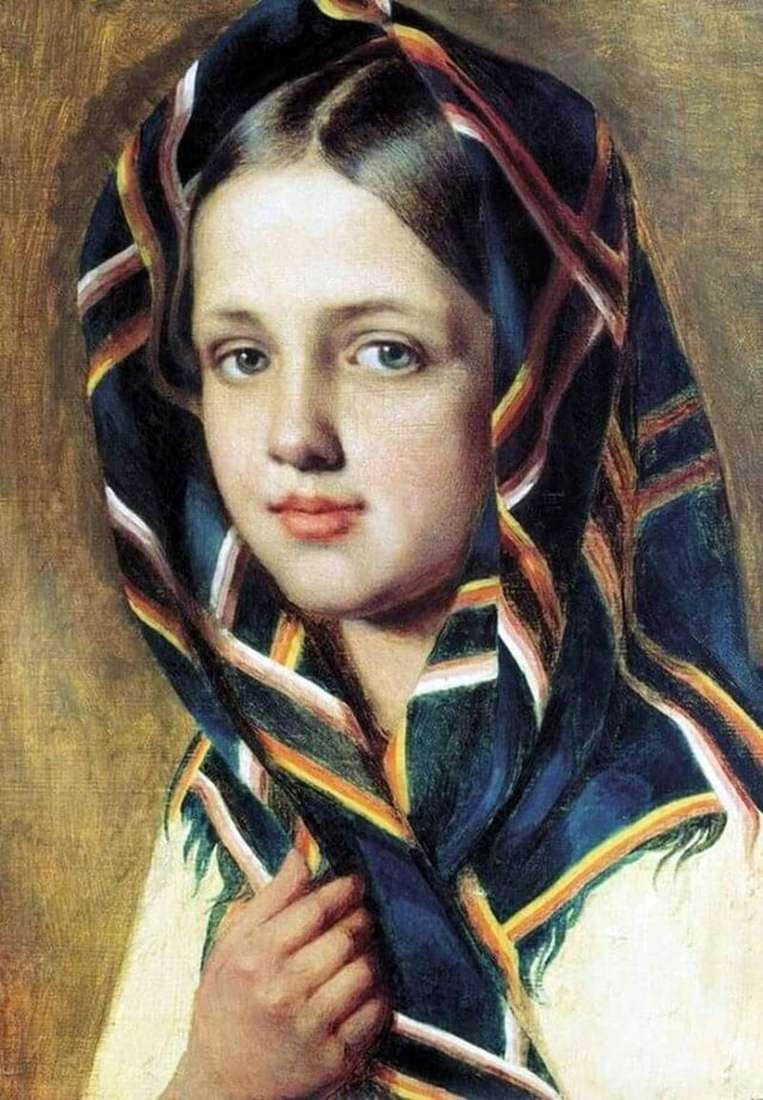 Girl in a scarf by Alexey Venetsianov
Girl in a scarf by Alexey Venetsianov Gumno by Alexei Venetsianov
Gumno by Alexei Venetsianov Sleeping shepherdess by Alexei Venetsianov
Sleeping shepherdess by Alexei Venetsianov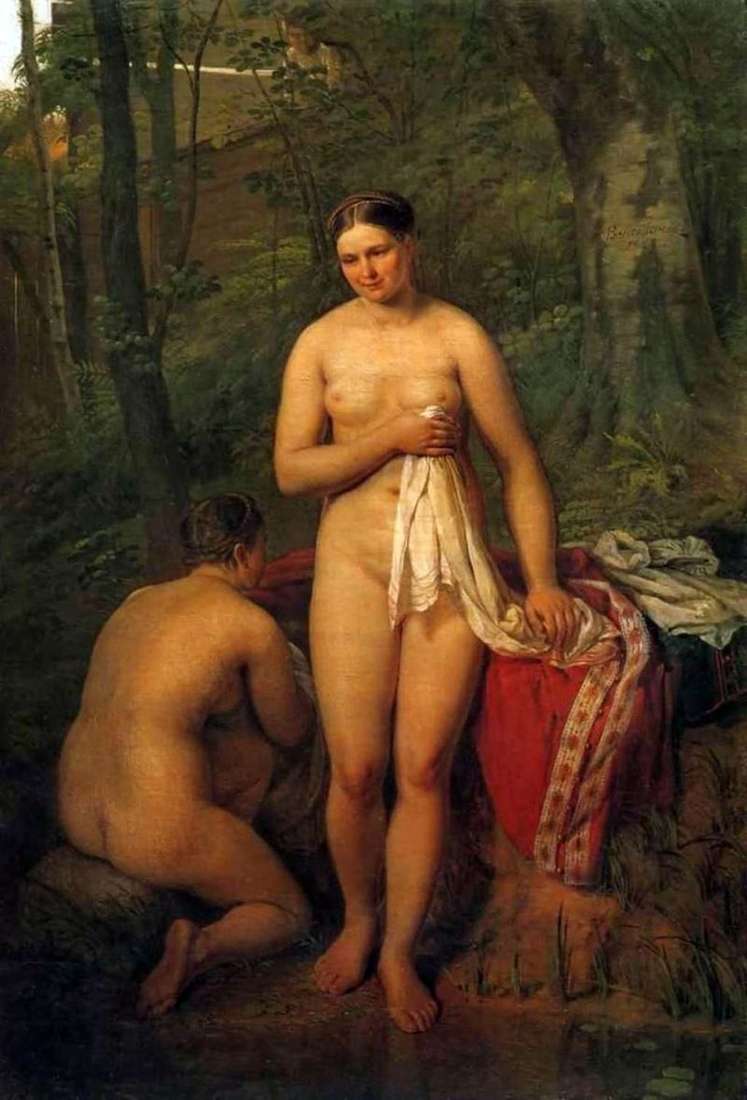 Bathers by Alexei Venetsianov
Bathers by Alexei Venetsianov